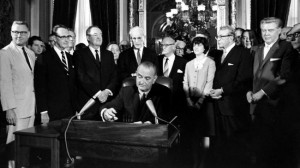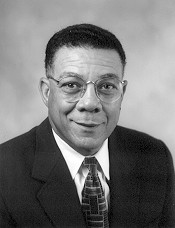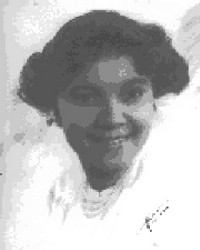Black History, Law

Charlotte Ray was the first African American female lawyer in the United States
Born on January 13, 1850, in New York City. In 1872, Charlotte E. Ray became the first female African-American lawyer in the United States. She grew up in a large family as one of seven children. Her father, Charles, was a minister and an activist in the abolitionist movement.Ray attended the Institution for the Education of Colored Youth in Washington, D.C., during the early 1860s. The institution was one of only a handful of places that offered a quality education to young, African-American women. By the end of the 1860s, she had become a teacher at the preparatory school associated with Howard University. Ray then applied to the university’s law degree program using only her initials, C. E., to disguise her gender. The trick worked, and Ray gained admittance to the program. She excelled at her studies at the university, especially in corporate law. (more…)
Black History, Law, Politics
 She was born in Jacksonville, Florida, but at the age of 12 her family moved to Atlanta, Ga. She received a B.A. (magna cum laude) from Wellesley College, a J.D. from Harvard Law School, and a M.P.P. in business and government policy from the Kennedy School of Government at Harvard.
She was born in Jacksonville, Florida, but at the age of 12 her family moved to Atlanta, Ga. She received a B.A. (magna cum laude) from Wellesley College, a J.D. from Harvard Law School, and a M.P.P. in business and government policy from the Kennedy School of Government at Harvard.
During the Obama Campaign for President, Patience served on the Obama/Biden Metropolitan and Urban Policy Advisory Committee and the Economy, Globalization, and Trade Policy Advisory Committee. In this role, she worked alongside others to provide local information to campaign leads. She downplays her role saying there were several people on the committee but whether there were 5 or 100 members we’re certain Patience contributed greatly.
In addition to working on policy Committees, Patience beat the
pavement locally, working on BWFO4Change phone banks and
volunteering in Virginia evenings and weekends to help elect Senator Barack Obama to the Presidency. When the campaign came to a close, she did not lose steam—she informed the campaign office that she was willing to go anywhere in Virginia to help out on Election Day. She didn’t expect them to say, “Great, we need help in Martinsville, VA.â€� It is important to note that Martinsville is 300 miles from Washington, DC and only 13 miles from the North Carolina border.
(more…)
Black History, Law, Politics

Voting Rights Act Signing
On August 6, 1965, President Lyndon B. Johnson signed the Voting Rights Act into law. Forty-seven years later, the U.S. is embroiled in a controversy over Voter ID laws that have been passed in several states, and which critics say could prevent millions of Americans from voting this year. Florida Rep. Frederica Wilson sent out a press statement today, making just that point. The statement read:
“Today, we commemorate the 47th anniversary of the Voting Rights Act, a historic milestone in the Civil Rights Movement. So many people died so that we could have the right to vote. I never thought that in my lifetime we would have to fight again for our Constitutional right to vote. (more…)
Black History, Education, Law
 The NAACP Legal Defense and Educational Fund (LDF) is the country’s first and foremost civil and human rights law firm. Founded in 1940 under the leadership of Thurgood Marshall, who subsequently became the first African-American U.S. Supreme Court Justice, LDF was launched at a time when the nation’s aspirations for equality and due process of law were stifled by widespread state-sponsored racial inequality. From that era to the present, LDF’s mission has always been transformative: to achieve racial justice, equality, and an inclusive society.
The NAACP Legal Defense and Educational Fund (LDF) is the country’s first and foremost civil and human rights law firm. Founded in 1940 under the leadership of Thurgood Marshall, who subsequently became the first African-American U.S. Supreme Court Justice, LDF was launched at a time when the nation’s aspirations for equality and due process of law were stifled by widespread state-sponsored racial inequality. From that era to the present, LDF’s mission has always been transformative: to achieve racial justice, equality, and an inclusive society.
As the legal arm of the civil rights movement, LDF has a tradition of expert legal advocacy in the Supreme Court and other courts across the nation. LDF’s victories established the foundations for the civil rights that all Americans enjoy today. In its first two decades, LDF undertook a coordinated legal assault against officially enforced public school segregation. (more…)
Black History, Firsts, Law

Reuben V. Anderson
Reuben V. Anderson was the 1st Black appointed to Mississippi Supreme Court.
African American civil rights lawyer, Anderson attended Tougaloo College and graduated from Ole Miss law school in 1967. Upon his graduation, he began working as the Mississippi associate counsel with the NAACP Legal Defense and Educational Fund Inc. until 1975. From 1981 to 1985, he served as judge in Hinds County Circuit Court.
Next, he was appointed to the Mississippi Supreme Court, a position he held until 1991.
Black History, Law

Muriel O. Farmer
Born December 2, 1917 Muriel, the daughter of a Chicago policeman, was one of the first women to graduate from the prestigious John Marshall Law School in Chicago, IL. After graduating from the University of Illinois in Champaign-Urbana at the age of 21, she worked as a social worker while studying law. After passing the bar Muriel went into the legal profession full time and spent over 50 years practicing law, becoming one of the best known divorce lawyers in the state.
Oddly enough, two of her best friends, both black women, were also John Marshall graduates. Her cousin went on to become an acclaimed criminal lawyer (Bernice Z. Leaner) and her best friend went on to be Chicago’s first Black Alderwoman (Anna Langford).



 The NAACP Legal Defense and Educational Fund (LDF) is the country’s first and foremost civil and human rights law firm. Founded in 1940 under the leadership of Thurgood Marshall, who subsequently became the first African-American U.S. Supreme Court Justice, LDF was launched at a time when the nation’s aspirations for equality and due process of law were stifled by widespread state-sponsored racial inequality. From that era to the present, LDF’s mission has always been transformative: to achieve racial justice, equality, and an inclusive society.
The NAACP Legal Defense and Educational Fund (LDF) is the country’s first and foremost civil and human rights law firm. Founded in 1940 under the leadership of Thurgood Marshall, who subsequently became the first African-American U.S. Supreme Court Justice, LDF was launched at a time when the nation’s aspirations for equality and due process of law were stifled by widespread state-sponsored racial inequality. From that era to the present, LDF’s mission has always been transformative: to achieve racial justice, equality, and an inclusive society.
